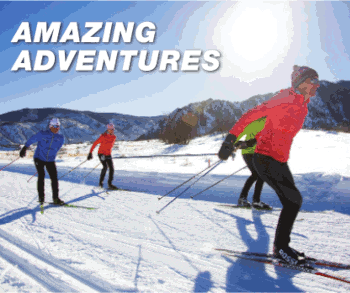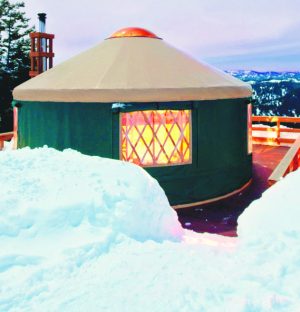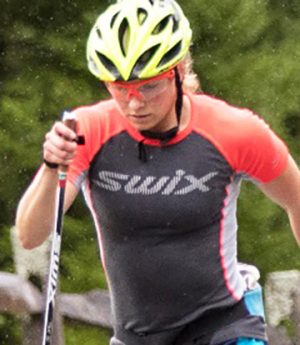September 13, 2008 (Park City, Utah) – For Chris Devlin-Young (sit-ski; Campton, NH), encouraging disabled veterans to take up competitive skiing isn’t just about having more people to race against on the hill – though he’s the first to admit that it’s part of the reason he’s an advocate of his sport. For the U.S. Disabled Ski Team racer, promoting skiing is about giving people the chance to find the happiness he found a quarter century ago.
“It’s the one time in my life that I feel non-disabled, so I feel a sense of pride and a sense of responsibility to be able to give back to the community and continue to support the future of the sport,” Devlin-Young said. “Unfortunately, there’s always going to be new disabled people and new veterans and it’s my duty to carry on the legacy of the people that created this avenue for me.”
In 1982, Devlin-Young was involved in a plane crash while serving with the U.S. Coast Guard in Alaska. Paralyzed below the waist, it took Devlin-Young over two years to discover some happiness in an outlet for physical activity. “I spent two and a half years being very angry and having a lot of feelings of being half a man,” Devlin-Young said. “It was a therapist at the veterans hospital that got me to go skiing. “At the time, I didn’t want to do anything. Anything that sounded fun or involved being around other people was something I didn’t want to do. But this guy wouldn’t take no for an answer and God bless his heart because it made a huge difference in my life.” The satisfaction he gets from flying down the mountain is now the driving force behind Devlin-Young’s desire to get other disabled veterans involved in skiing. His persistence has brought other veterans like him to the U.S. Disabled Ski Team.
From freefall parachuting to scuba diving, U.S. Air Force veteran Sean Halsted’s (Ephrata, WA) life had always been about staying active. Then, one day, an accident changed the course of Halsted’s physical life permanently. “We were doing combat search training and I fell from a helicopter that was hovering 40 feet above the ground,” Halsted said of the accident that left him paralyzed. “My first impression was that my physical life was over. In my opinion I thought I wasn’t going to be doing anything.” But, with the help of rehabilitation programs for veterans put on by the Veterans Association (VA), Halsted eventually found his way to sport.
“The VA puts on some great rehab programs like the Wheelchair Games and the Winter Sports Clinic. Through that I found out that I could get back into sports – that I could push myself the way I used to,” Halsted said. Halsted started competing in the Wheelchair Games in 1999 and was participating in the winter clinics by 2000, but it was a meeting with Devlin-Young that developed Halsted’s interest in pursuing winter sports.
“People had been talking to me at those events and saying that I should go to the Paralympics and I was like ‘yeah, whatever, I’m not that good,’ but at different rehab clinics, they started bringing in people from the Paralympics,” Halsted said. “Then I met Chris Devlin-Young and he talked to me about it and I thought, ‘this is something I really can do,’ and then it was just a matter of getting me to choose my sport.”
“I was trying to convince him to go alpine skiing and he ended up going nordic! We skied together a couple of times at the National Disabled Veterans Winter Sports Clinic, which is where I learned to ski 25 years ago,” Devlin-Young said. Through his time on the U.S. Ski Team, Halsted, like Devlin-Young, has felt a desire to get others as involved as he is – not only to better their lives, but to give him more people to compete against, he said.
“One of the hardest issues I fight with is how to get people involved. It’s me being selfish because I just want more people to play with,” Halsted said. “But in the bigger picture, people need to get out and see that their life isn’t over. I love to go to the hospitals. I try to get out there and talk to them. “I am hoping that with my place on the team and the different activities I’ve been a part of, that I’ve gained an experience that will help me to appeal to a broader picture of more people,” Halsted said.
As for Devlin-Young, it’s all a matter of keeping the sport alive for people that need it in their lives as much as it needs their participation and involvement. “Being a disabled veteran myself, I feel it’s really important to be here for the next generation so that this doesn’t die out. When I first got on the U.S. Disabled Ski Team 19 years ago, 75 percent of the team was disabled veterans at that time. Now, there’s three of us,” Devlin-Young said. “Part of the reason I go back to the clinic every single year is in the hopes of finding the Sean Halsteds and convincing them that there’s a lot of life to be lived and a lot of fun to be had and this is an avenue that can make life worth living.”
For more info on getting involved with the U.S. Disabled Ski Team, contact Team Manager Catie Briggs at cbriggs@ussa.org
Top News Stories
Veterans Find New Life in Skiing
release by USSALeave a Reply
You must be logged in to post a comment.






![National camp action [P]...](https://skitrax.com/wp-content/uploads/2019/08/Duluth-4-2019-08-08-at-10.46.51-AM-300x246.png)
![Matt Liebsch on the CXC Elite Team [P] CXC...](https://skitrax.com/wp-content/uploads/2019/08/Matt-Liebsch-CXC.2-525x700.4-300x267.jpg)
![Dan LaBlanc [P]...](https://skitrax.com/wp-content/uploads/2019/08/Dan-LaBlanc-img_1855.3.jpg)

![Chris Devlin-Young (sit-ski; Campton, NH)[P]USSA](http://skitrax.com/skitrax22/images/skitrax/48cbef8c927dbChris Devlin-Young.jpg)